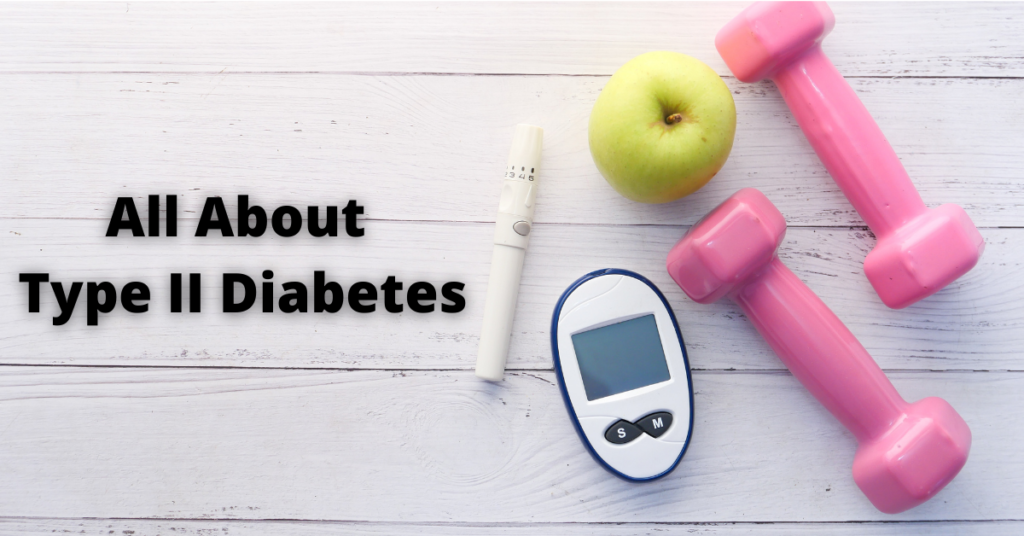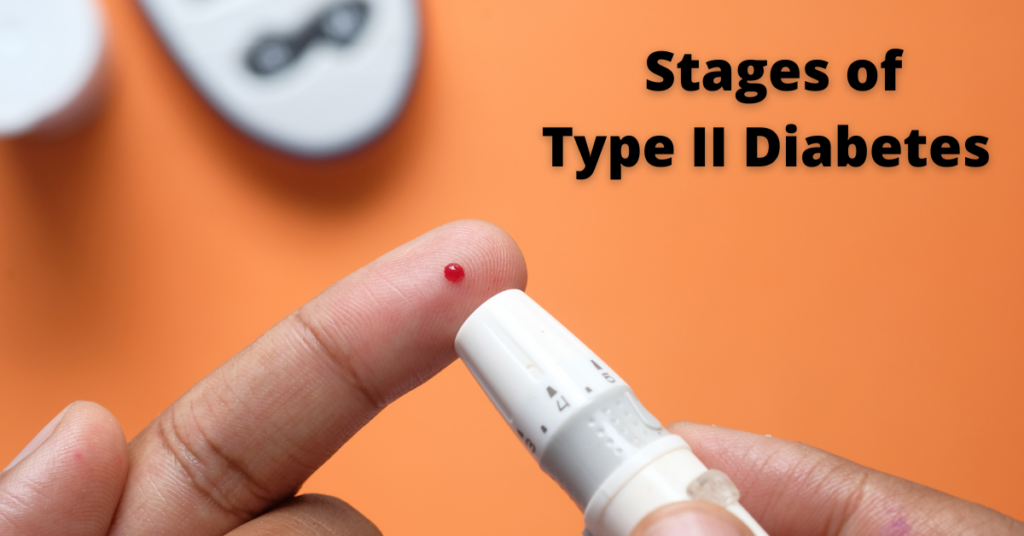Contents
What Is Type II Diabetes?
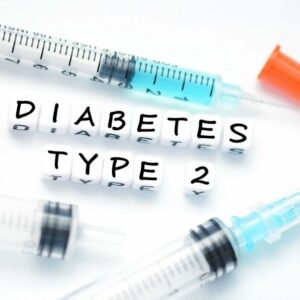 Type II diabetes is a chronic condition that requires medical attention. Type II diabetes is most commonly seen in adults. The condition occurs when the body doesn’t produce enough insulin or becomes resistant to it. This makes it impossible for glucose (sugar) to reach your cells and be converted into energy. Having type two diabetes increases the risk of a heart attack. Some other risks are kidney damage, eye problems, amputation due to nerve damage, and other serious complications.
Type II diabetes is a chronic condition that requires medical attention. Type II diabetes is most commonly seen in adults. The condition occurs when the body doesn’t produce enough insulin or becomes resistant to it. This makes it impossible for glucose (sugar) to reach your cells and be converted into energy. Having type two diabetes increases the risk of a heart attack. Some other risks are kidney damage, eye problems, amputation due to nerve damage, and other serious complications.
Symptoms of Type II Diabetes
The symptoms of Type II diabetes are very different than those associated with type one. While they can be mild, the most common symptom is whether or not you have any existing cardiovascular disease at all. If you do, then controlling your blood sugar will help prevent heart attacks and other serious cardiac problems
The first signs that a person may be suffering from type two diabetes include:
Frequent Urination
Due to type 2 diabetes, you may experience an increase in your frequency of urination. You may find yourself more than once a night waking up to use the bathroom.
Weight Loss
 If you are experiencing weight loss, this could be an indication that you may be suffering from Type II diabetes. This can also result from changes in diet or exercise routines as well. It’s important not to jump to conclusions about what might be causing it until further tests have been run.
If you are experiencing weight loss, this could be an indication that you may be suffering from Type II diabetes. This can also result from changes in diet or exercise routines as well. It’s important not to jump to conclusions about what might be causing it until further tests have been run.
Nausea/Vomiting
Both nausea and vomiting usually go hand-in-hand with one another. if after eating you notice either of these symptoms cropping up then there may be something else going on inside of your body. It can be pancreatitis ( often occurs alongside Type II Diabetes).
Fatigue and Tiredness
 A person with type two diabetes may feel tired throughout the day even after sleeping through the night. This fatigue could stem from high or low blood sugar levels or both due to insulin resistance. A lack of energy will make it difficult to do any activity at all including exercise.
A person with type two diabetes may feel tired throughout the day even after sleeping through the night. This fatigue could stem from high or low blood sugar levels or both due to insulin resistance. A lack of energy will make it difficult to do any activity at all including exercise.
Numbness or Tingling
If you feel tingling or numbness in your fingers and toes for no apparent reason, this could be an indication that the nerves are becoming damaged due to high blood sugar levels. These can also become very painful if left untreated.
Stages of Type II Diabetes
These are four stages of Type II Diabetes:
- Stage one is when the pancreas does not produce enough insulin. In this stage the blood sugar levels are normal. It is when the body is using insulin and it becomes less effective.
- Stage two is when the pancreas stops producing insulin. In this stage, a person starts to notice symptoms of Type II Diabetes. These are such as frequent urination and thirstiness. This is because their body cannot absorb glucose from food. Their blood sugars can be high or low which causes short-term problems. These are like blurry vision, fatigue, nausea, and vomiting. Sometimes long-term complications will also start to occur at this point. These include blindness and nerve damage in the legs that may lead to amputation.
- If left untreated, Type II Diabetes moves on to stage three. This is where there are high blood sugar levels along with decreased kidney function. The kidneys cannot properly flush out waste products as a result of diabetes. This can lead up to a buildup in ketones. At this point, if treatment begins it will include either oral medications or injections of insulin by a doctor. These need to be monitored closely.
- Stage four is when you have type II diabetes or pre-diabetes with high blood pressure, high cholesterol, and other health problems such as heart disease, stroke, blindness, or poor circulation in the arms and legs. This can eventually lead to amputation of limbs if it goes untreated for too long. If any of these symptoms occur then contact a doctor immediately. It is because this could also mean something else entirely different from Type II Diabetes so do not ignore them!
What Causes Type 2 Diabetes?
There are several factors that contribute to the development of type two diabetes. Some of these are:
Genetics
If you have family members who suffer from type two diabetes, you are at a greater risk of contracting it as well. This is due to the fact that family history can trigger certain genes or alleles leading to insulin resistance.
Obesity
 Being obese is one of the leading causes of developing Type II Diabetes. It puts a significant amount of stress on the body’s organs, which over time can lead to organ failure (i.e., heart failure).
Being obese is one of the leading causes of developing Type II Diabetes. It puts a significant amount of stress on the body’s organs, which over time can lead to organ failure (i.e., heart failure).
Inactivity
One major factor in contracting type two diabetes is lack of exercise and an unhealthy diet. This leads to obesity due to excess fat storage around vital organs. These are such as liver cells and pancreas cells. This eventually leads to impairment in insulin production by those livers and pancreases respectively.
Unhealthy Diet
Due to an unhealthy diet, the body becomes overwhelmed with sodium, which causes water retention and high blood pressure. Over time this can lead to heart failure or kidney damage.
Stress
 A study shows that stress may trigger changes in how our body responds to insulin resulting in the development of type two diabetes. Due to this, individuals are encouraged to practice stress management techniques. This is in order to prevent or delay the onset of type two diabetes.
A study shows that stress may trigger changes in how our body responds to insulin resulting in the development of type two diabetes. Due to this, individuals are encouraged to practice stress management techniques. This is in order to prevent or delay the onset of type two diabetes.
Age
As people age, their cells become less responsive creating a condition known as insulin resistance. When this happens, more insulin is needed for glucose uptake and blood sugar control. This increases the risk of developing Type II Diabetes.
Smoking
 Cigarette smoking has been shown to increase insulin resistance. This is a key factor in the development of type two diabetes.
Cigarette smoking has been shown to increase insulin resistance. This is a key factor in the development of type two diabetes.
History of Gestational Diabetes
Women that have had gestational diabetes or pregnancies with high blood sugar levels (hyperglycemia), regardless if it was treated or not, tend to be at a higher risk for developing Type II Diabetes. This is within the first six months after delivery than those women without such history. It is because during pregnancy there is an increase in insulin resistance as well as increased glucose production. This is a result of hormonal changes. After pregnancy, these effects remain which can lead to Type II Diabetes. It is when combined with other factors such as age and unhealthy diets.
Certain Medications
 There are some medications that treat mental health disorders and respiratory conditions. These are such as corticosteroids and protease inhibitors. This can lead to an increased risk for developing Type II Diabetes. This may be due to those specific medications’ ability to cause weight gain or affect how the body processes glucose from food intake (i.e., high blood sugar levels). In addition, some other prescription drugs that are used as appetite suppressants have been associated with complications. These lead to diabetes mellitus including prescribed antidepressants.
There are some medications that treat mental health disorders and respiratory conditions. These are such as corticosteroids and protease inhibitors. This can lead to an increased risk for developing Type II Diabetes. This may be due to those specific medications’ ability to cause weight gain or affect how the body processes glucose from food intake (i.e., high blood sugar levels). In addition, some other prescription drugs that are used as appetite suppressants have been associated with complications. These lead to diabetes mellitus including prescribed antidepressants.
Diagnosis of Type II Diabetes
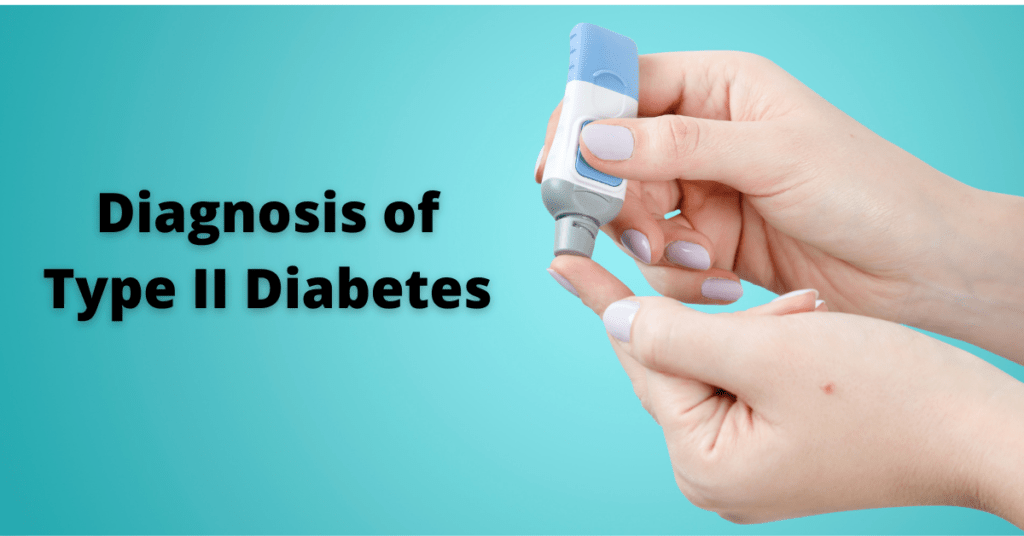
Diagnosis of Type II Diabetes is common in today’s society. However, there are many ways to combat the disease and it does not need to be a death sentence! Even though Type II Diabetes is often referred to as “the silent killer,” that doesn’t mean you should ignore it.
The diagnosis is done by a combination of factors.
- The first is by measuring blood glucose levels. It can be with a fasting plasma glucose test, an oral glucose tolerance test, or the A-G tests. As well as this, they will also check your HbAIC and C-Peptide levels. This is to see how insulin resistant you are, along with checking your height/weight ratio. It is against body mass index (BMI) charts for obesity rates.
- Another way to diagnose Type II Diabetes is by measuring insulin levels after fasting and 30 minutes afterward. It is through an oral glucose tolerance test known as A-G test. It can also be through checking for C peptide levels during this time period.
- The last method, although not always reliable because there are so many factors involved, is looking at whether other family members had diabetes when they were younger; if more than one-third of them did – then there is a great chance that you may also get Type II Diabetes.
Treatment of Type II Diabetes
These are some treatment options for Type II Diabetes.
Medications

Medications can be a method to treat Type II Diabetes. Some of these medications are metformin, pioglitazone, and chlorpropamide. Medications can decrease blood glucose levels and can help to maintain a healthy weight.
Insulin Therapy
Insulin is usually the first line of treatment if oral medications do not control blood glucose levels. There are several types of insulin: rapid-acting, short-acting and intermediate-acting insulins. You can use them alone or in combination with other types to match the body’s natural release pattern. This is for insulin production. This is because Type I diabetics cannot produce any insulin, they will always need supplemental insulin injections daily to survive. As well as taking multiple shots a day many people use an Insulin Pump which gives them greater flexibility by allowing them to give their own basal rate (a low continuous amount) at night. This is when there isn’t much food around and then bolus after meals for carbohydrates consumed throughout the day.
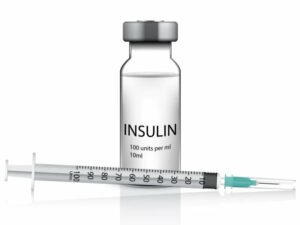
Insulin therapy with or without oral antidiabetic drugs. A study showed that insulin-treated patients had a 34% lower rate of major cardiovascular events than the control group (P=0.005). This means they were less likely to experience heart attacks, strokes, and other serious complications in the future.
Surgery

Type II Diabetes is a disease that can be treated through surgery. There are various types of surgeries to treat Type II diabetes. These include a gastric sleeve, laparoscopic adjustable gastric banding (LAGB), Roux-en-Y Gastric Bypass Surgery (RYGBP), and Biliopancreatic Diversion with Duodenal Switch(BPD/DS). This treatment will reduce body weight by about 60% after two years.
Lifestyle Changes
Lifestyle changes can be a great way to treat and prevent Type II Diabetes. It’s important that these lifestyle changes are done before they turn into problems or complications later on in life because prevention will always be better than cure.
These are some of the changes in lifestyle which can help in managing Type II Diabetes.
Eat Healthy Diet

Eat healthy foods and maintain a proper diet that is low on the glycemic index. This includes getting rid of sugary drinks, candies, cakes, etc., which will be helpful in reducing weight as well.
Do Exercises
Do some physical activity at least for 30 minutes per day to reduce glucose levels by using more energy from stored fat instead of carbohydrates found in food sources like bread & pasta. Doing this also results in burning up about 100 calories with every half hour’s workout done preventing the accumulation of body fats leading to obesity or overweight conditions which is one major cause for type two diabetes development.
Practice Meditation

Meditation has shown great benefits toward the betterment of health conditions particularly when it comes to diabetic patients. Meditation helps to reduce stress levels which in turn reduces blood glucose levels significantly. This can lead to better health conditions for diabetic patients with fewer complications over time.
Keep Check On Weight
Keeping an eye on one’s own body weight is also important. Keeping it under control or within limits will prevent diabetes from worsening any further. This can become unmanageable at later stages when there are more complications. These can result in heart disease, kidney problems, etc. Through this, it is easier to manage at earlier stages of diabetes.
Complications of Type II Diabetes
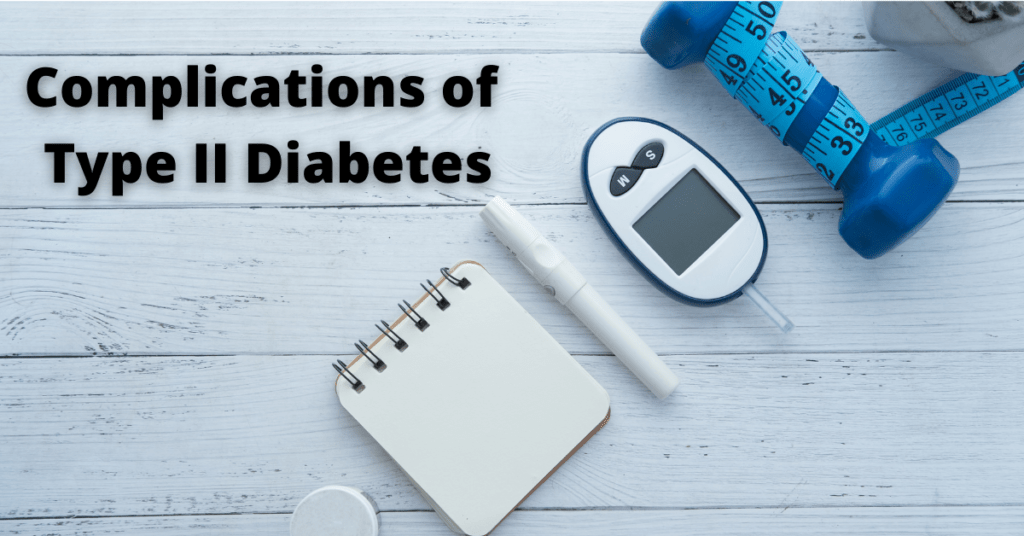
Type II Diabetes is a disease that affects the blood vessels. The hormone insulin helps your body use glucose, which comes from the food you eat, to produce energy for cells in the muscles and other tissues of your body. Insulin also allows glucose into muscle cells so they can make protein. If you have Type II diabetes, it means that this process does not work properly anymore because either there isn’t enough insulin or your body doesn’t respond well to it—or both. This causes sugar levels in the blood to get too high. Over time if left untreated, type two diabetes may cause damage to many parts of the body including:
Atherosclerosis
With uncontrolled sugars over long periods of time, the walls of your arteries can accumulate a white, fatty material called plaque. Plaque is like rust that builds up in your blood vessels and slowly narrows them down. If you have atherosclerosis such as coronary artery disease (CAD), it means that there’s less space for oxygen-rich blood to go through when the heart muscle squeezes during each heartbeat. This increases your chance of having:
Heart Attack

Also known as myocardial infarction, this happens when an area of cholesterol-clogged plaque breaks off (rupture) which usually stops or slows blood flow in these regions—resulting in damage to part of the heart muscle itself;
Stroke
A stroke occurs when the blood flow to the brain is interrupted by a clot or ruptured plaque which can cause permanent damage.
Heart Failure
The heart muscle may become too weak to pump enough oxygen-rich blood through your body, eventually leading to symptoms such as shortness of breath and fatigue;
Kidney Disease

When present for several years, high sugar levels that are not controlled with diet or medications can damage small blood vessels in the kidneys that filter wastes out of the bloodstream. This causes them to lose their filtering capabilities over time. This means harmful substances build up in your body. It is instead of being passed into urine making you feel sicker than before. If left untreated this could lead to kidney failure requiring dialysis treatments possibly forever.
Conclusion
People with Type II Diabetes can live a long and healthy life. There are many ways to manage diabetes, including diet changes. This will help you achieve your goals for managing the disease. We encourage all people living with this condition to seek out resources like MantraCare. You can here find a lot of information on how to not only manage but also prevent complications of diabetes. This is through lifestyle choices such as exercise, medication management, or dietary changes. Remember there is no one size fits all approach so find what works best for you.
Do you want to get rid of diabetes? Join our online diabetes consultation program and reverse your Diabetes naturally through lifestyle changes such as a Personalized Diet plan, Exercise, dieticians, and health coaches.
